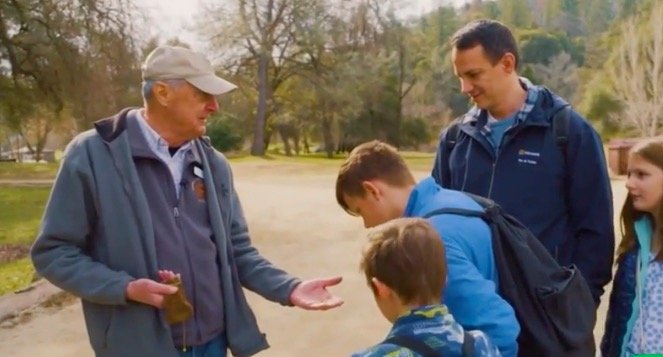More than 150 years later the hunt for gold is still on in NorCal. Winter storms bring a new fever

At 75 years old
By Jason Marks
Click here for updates on this story
SACRAMENTO, California (KCRA) — The recent heavy rains in the Sacramento Valley created flooding in many of the streams and rivers. It also pushed gold from the mountains down into the valley, leading to a bit of a gold rush.
Nestled along the south fork of the American River is a place where the name speaks for itself. Marshall Gold Discovery State Park in Coloma is a spot rich in history. The first nugget was discovered there in 1848. More than 150 years later, that fever is still being felt.
Ed Allen is the park’s historian. He said he’s “always looking” for gold.
At 75 years old, he’s still giving tours to those who want to learn more about the gold rush. He’s amassed a wealth of knowledge when it comes to that precious metal so many continue to try and unearth.
“We just had a flood here last month and that brought down gold,” Allen said, sitting next to the American River. “People are still looking for gold. We’ve only found 10-15% of the gold in California.”
At Wood’s Creek in Jamestown, the hunt is on for that other 85%.
“This is the good stuff, and the best stuff will be in this box at the end of the day,” Nick “Nugget” Prebalick said.
His family is leasing a 500-yard claim along the creek where they can search for gold.
“I’ve found quite a few nuggets,” Prebalick said.
Every day, Prebalick, his son Nate and his dad Terry are out prospecting.
“It’s pretty easy to get hooked,” Prebalick said. “This is like the best office ever.”
The family is using the same equipment used centuries ago. The only difference now is that metal pans have been replaced by plastic.
The Prebalicks aren’t just looking for pay dirt. They spend days running their business, California Gold Panning, which teaches people like 24-year-old Ashley Hardy how to pan.
“It’s kind of a cool experience to do that they were doing back then,” Hardy said. “I see a good 10 pieces in there right now.”
There is a huge nugget of a difference between when the 49ers first got on the scene and now. The price of gold in 1850 was $20 an ounce. Nowadays one ounce is worth a little more than $1,900.
“After you’ve been digging all day, you fill up 10-20 buckets and then it all comes down to that pan to see what’s in there,” Prebalick said.
State law doesn’t allow miners to use big machinery, so fate is left up to good old-fashioned elbow grease.
“The more earth you move the more gold you’ll probably get,” employee James Holman said. “If you don’t move any earth, you don’t get any gold.”
A successful day for Holman and the Prebalicks is a pennyweight of gold or 1.5 grams worth about $80.
“They didn’t get all the gold and we are still on it,” Holman added.
Most of that 85% left is deep under the earth’s surface. Allen said it is too expensive to be dug up, but that doesn’t mean there isn’t gold out there. Several years ago, a miner found a six-pound nugget in Butte County.
Please note: This content carries a strict local market embargo. If you share the same market as the contributor of this article, you may not use it on any platform.